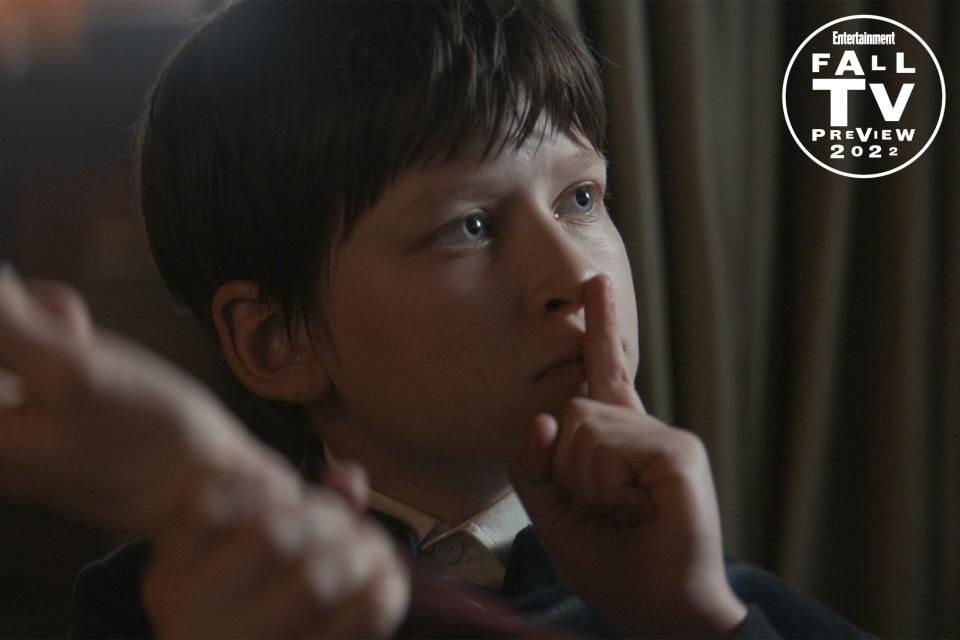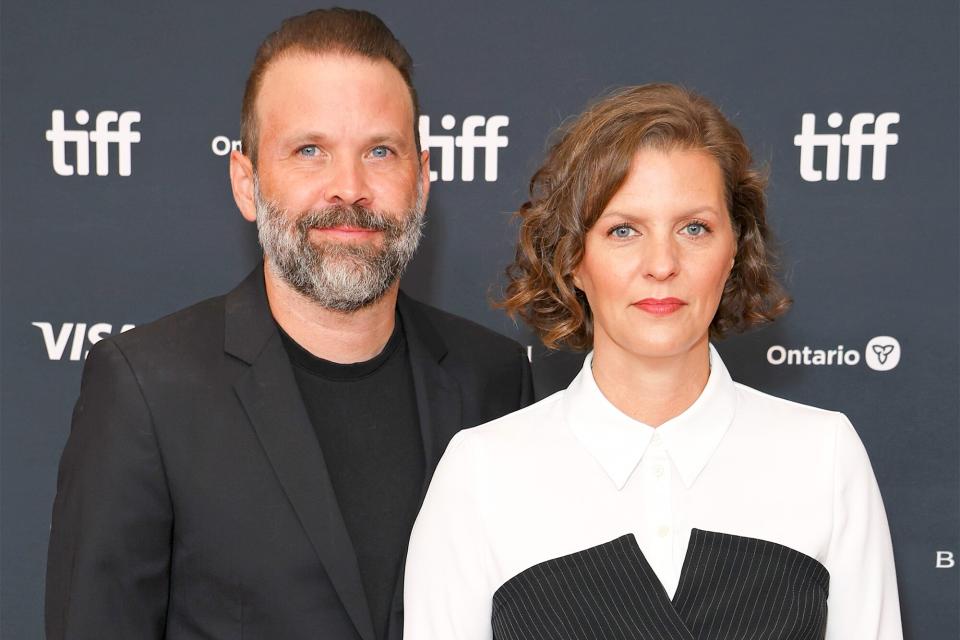Dark creators tease the mysteries behind their new mind-bending Netflix series 1899
Fans of Netflix's twisty time travel series Dark will be happy (although perhaps not surprised) to hear that creators Baran bo Odar and Jantje Friese's followup, 1899, is a real mind-bender.
The former show, after all, spawned a worldwide cult following of fans eager to untangle Dark's knots, and the idea for 1899 first sprung up after Dark's first season. The success of that show enabled Odar and Friese to tell the story they wanted to tell over three mind-boggling seasons, and also provided a bit of a blessing and a curse when it came time to work on 1899.
"There was a huge pressure because, first of all, we never expected that kind of success, and then it grew season for season," Friese tells EW. "And then after the third season of Dark, there was this huge pressure on our shoulders, because everyone has expectations, and everyone kind of either wants to go on the same ride or kind of the same ride."
Friese says she was bothered by this for the first few months actively working on the scripts for 1899, but, "At some point, we just said, 'Let's shake it off.' That's what we tried to do. And basically just concentrate on what we want to do and what we want to tell."
Her partner feels differently though. "It was really nice that [Dark] was so well received, especially because it is a very weird, complex show in general," Odar admits. "And it helped us see that we can trust our instincts, and there are people out there that are actually interested in our voice and what we have to say and how [we] tell stories."

Netflix Fflyn Edwards as Elliot in '1899'
With all that in mind, they set out to make 1899, which follows the multicultural passengers of a migrant steamship heading west to leave the old continent, whose journey takes an unexpected turn when they discover another migrant ship adrift on the open sea. Per the official synopsis, what they will find on board will turn their passage to the promised land into a horrifying nightmare.
Friese and Odar have been otherwise tight-lipped about the series so far, but a teaser reveals all of the cryptic clues, strange symbols, and dark imagery fans of their work will recognize. Ahead, EW sat down with the creators to pick their brains about all of that and solve the mysteries of what viewers can ultimately expect when 1899 drops on Netflix on Nov. 17.
Mystery #1: What's the genre?
When the series was first revealed, early reports described the genre as horror, but Friese says that's not really accurate. "I would say it's a drama mystery show, or maybe a mystery thriller. I mean, we're always mixing genres, but the DNA is not per se a horror show."
Mystery #2: Is it truly multicultural and multilingual?
Another part of the series that was touted when it was first announced was that 1899 would not be entirely in German, like Dark, nor would it be in any one language. "We do love challenges," Odar says with a laugh. "And we wanted to do a multilingual show that you treat all these different cultures with respect, and you don't just do it in English, or whatever language, and just pretend that they're all from these different cultures. We wanted to have this beautiful mix of voices and languages." Odar and Friese both speak English and German, with a smattering of Spanish (him) and French (her), but the scripts called for everything from English to Cantonese to Danish, and more. To achieve this, Odar says Friese initially wrote the scripts in English, and then writers and translators from all over the world advised on the parts that needed to be in other languages. On set, Odar had phonetic scripts to reference as he directed scenes, and language assistants would be standing by to make sure nothing got lost in translation.
The international cast includes Dark alum Andreas Pietschmann, Emily Beecham, Aneurin Barnard, Fflyn Edwards, Miguel Bernardeau, Maciej Musial, Lucas Lynggaard Tønnesen, Rosalie Craig, Clara Rosager, Maria Erwolter, Yann Gael, Mathilde Ollivier, José Pimentão, Isabella Wei, Gabby Wong, Jonas Bloquet, Alexandre Willaume, and Anton Lesser, among others.
Mystery #3: Is time travel involved at all?
Sorry Dark fans, no time-travel wormholes here. Odar promises another "very interesting, weird theme" to 1899, but can't reveal what it is. Teases Friese, "There's definitely a core theme in the center of 1899, as well, and it's basically looking at that core theme through a narrative, but it's not time travel."
Mystery #4: What should Dark fans expect from 1899?
"There is a lot in the DNA that is kind of close to Dark in terms of the puzzle and needing an engaged active audience," Friese says. "But there are also things that are quite different in terms of atmosphere and tonality, but also pacing and more action-y stuff happening. So it is truly a beast of its own, but shares a lot of the same maybe mechanisms as Dark does. Hopefully it feels like something really fresh and new, while still [being] exactly what Dark fans would like to watch." And Odar has a bit of advice to viewers: "We do love to play with genres and expectations. I think you have to watch carefully, because every little piece means something."
Mystery #5: Does the story have anything to do with the Bermuda Triangle?
The poster for 1899 (below) shows a ship perched on the edge of a triangle in the middle of the ocean, leading some fans to speculate that the mysterious Bermuda Triangle myth could play a part in the story. Friese and Odar are coy when asked about it. "It's definitely an association that a lot of people have," Friese says. Odar adds, "But is it the right one? You will have to see."
What we know is just a drop in the ocean.
From the creators of DARK, comes 1899 — their next mind-bending mystery. pic.twitter.com/W1DbDP7aHR— Netflix (@netflix) September 13, 2022
Triangular symbols, such as those used in alchemy to denote the four elements, have popped up in the promo materials for the show so far. Naturally, that's by design, and is something fans should look out for as they watch. According to Friese, creating the mythology of one of their shows is a long, painstaking process. "We always work with symbols and objects, and we always have usually one specific object that is tied to one character. And then we try to find a world of symbols that all ties into our theme," she says. "Slowly you build your own mythology and set of rules. It's really a long, long process. And that's the same here again, now with the pattern pyramid and the triangles. It's all rooted in one core idea. And then you try to find ways to incorporate it throughout the story."
Mystery #6: What is volume technology and why was it used for 1899?
Odar revealed on his Instagram in a behind-the-scenes featurette that filming for the series took place in a newly custom built virtual production stage known as the Volume. The largest LED "Volume" of its kind in Europe, it unlocks the ability to capture a significant amount of complex visual effects shots in-camera through virtual sets and locations created with game engine technology, as opposed to a traditional green screen.

Leon Bennett/Getty Images Baran bo Odar and Jantje Friese
Odar says there were two reasons why they opted to use this new technology, which has been used previously on shows such as Disney+'s The Mandalorian. "We hate green screen, always did. Literally, it's bad. It's really bad. And then the pandemic happens, the show was supposed to be shot in a very traditional way, where we would have gone to a water tank and we would have built ship set pieces and traveled to other countries to shoot scenes there and stuff like that," he says. "But then the pandemic happens. So it was obviously challenging and not possible to do it in a traditional way."
Someone at Netflix mentioned the volume tech, and Odar and Friese were very impressed by how it looked. And though he believes it's the way of the future of filmmaking, Odar stresses that it was still a ton of work. "[It's] definitely not easier, really," he says. "We prepped a year to get there, because it is a beast that you have to understand. But you can create huge worlds with it." And he's not just talking major landscapes, but also more intimate set pieces, too. For instance, the ship's dining room, which is a pivotal set piece on the show, was not an actual physical room that they built. "It's a huge dining room, but it's actually just four pillars and a couple of tables and a couple of extras. And the rest is just virtual in it, even with digital extras, which we used for the first time, which they didn't on Mandalorian. We could create a huge dining room only with the volume tech."
Mystery #7: Is this a limited series?
If all goes according to plan, fans have many more episodes to look forward to. "It's structured again as a three-season mystery puzzle just like Dark," Friese explains. "And obviously, this will only happen if enough people watch, but the way that we approached development and how season 1 is ending, you kind of want to have another one. So hopefully, ultimately, that is happening. That's how we laid it out as a plan, and let's see if the world agrees."
Make sure to check out EW's Fall TV Preview cover story — as well as all of our 2022 Fall TV Preview content, releasing over 22 days through Sept. 29.
Related content:

 Yahoo Movies
Yahoo Movies 
